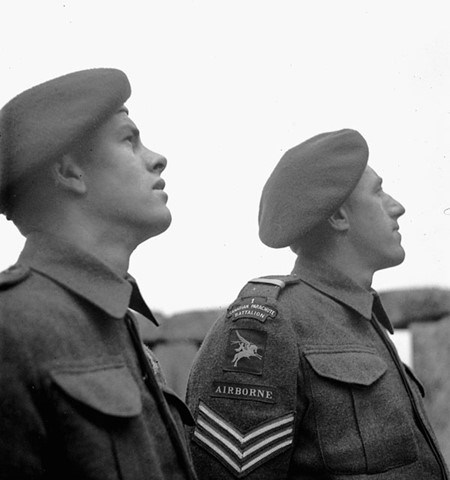Last week I was reminded of the 1st Canadian Parachute Battalion by a man whose father had served with the Battalion. I thought others might be interested.
(The 2nd Canadian Parachute Battalion was part of the Devils Brigade)
Origin of the 1st Canadian Parachute Battalion
The First Canadian Parachute Battalion was formed in July 1942. The Battalion had 26 Officers and 590 enlisted men.
There wasn’t parachute training facility in Canada in July 1942 so the men went to Fort Benning, Georgia for training. Facilities were later constructed at Camp Shilo at Brandon, Manitoba so after training at Fort Benning men went to Shilo. From there they were posted overseas and trained at RAF Ringway, England.
The first commanding officer was 31-year-old Major H. D. Proctor. The Major was a driving force behind the establishment of the Battalion. He was killed September 7, 1942 in a parachute training accident at Fort Benning, Georgia. He appears to be the first man in the Battalion to die.
Major Proctor jumped from a C-47 Dakota. An airplane following his aircraft struck him, cutting his parachute, sending him to the ground. It was believed he was killed on impact with the airplane. His body was returned to his home in Ottawa where his wife Dorothy and son lived and he was buried in the Ottawa (Pinecrest) Cemetery.
Major Proctor was replaced by Lieutenant Colonel G. F. P. Bradbrooke
Scrapbooking
My mother was an avid Scrap-Booker during the war and kept this copy in her files. Don Waddell was the neighbour kid from down the street in Toronto. The photo is from the March 13, 1943 Toronto Star.
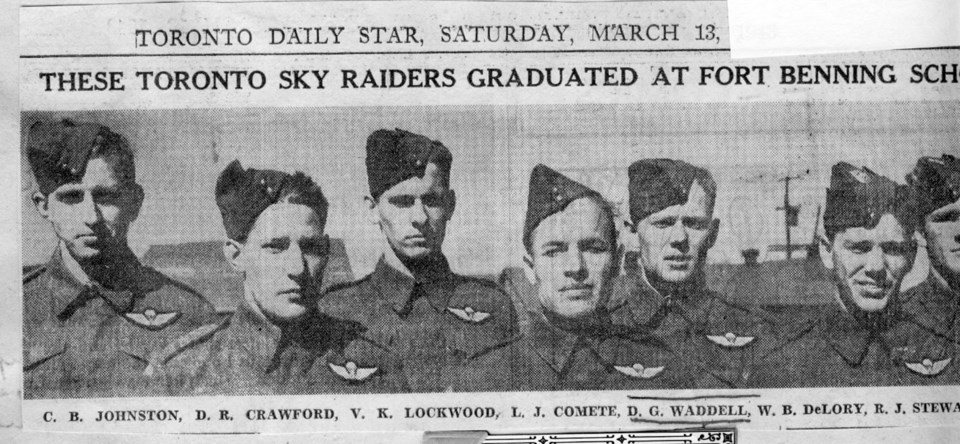
Don Waddell jumped into Normandy on the night of June 5/5, 1944. He carried ammunition for a Mortar. He could not find the Mortar-man and was taken Prisoner on June 6, 1944.
It appears the men in the photo all survived the war.
126 members killed – 9 were from Saskatchewan
A Photo Montage – 1st Canadian Parachute Battalion
The following is a montage of public domain photographs from Library and Archives Canada showing the 1st Canadian Parachute Battalion.
The Library and Archives Canada is a wonderful source for research information.
U.S. Army Parachute Training School, Fort Benning, Georgia, United States
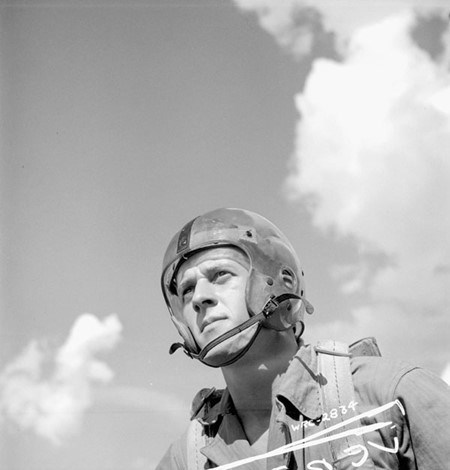
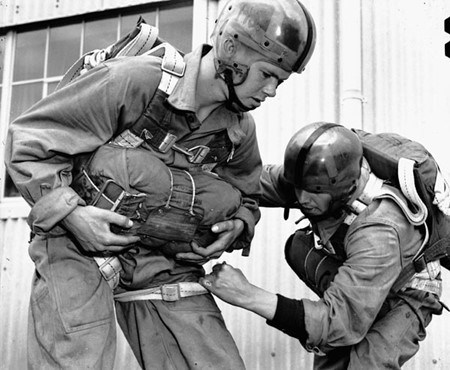
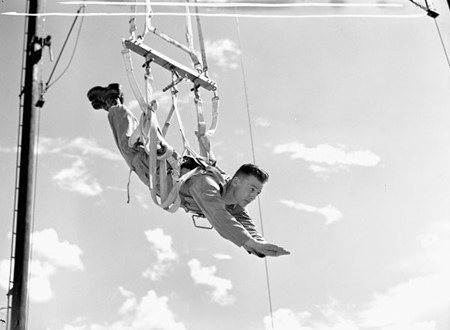
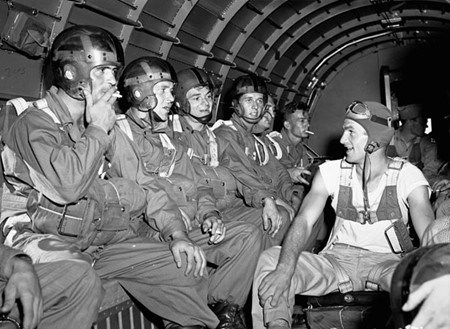
Editor: This was at the time when Major H. D. Proctor was killed. The men in the photo all survived the War.
Description: (L-R): Company Quartermaster-Sergeant A.C. Clifton, Lance-Corporal W.H. Fitzsimmons, Sergeant A. Appleton, Corporal C.W. Shaddock, Bombardier W.D. Cabell, Corporal N.R.V. Chapman. A U.S. Army jumpmaster sits at right.
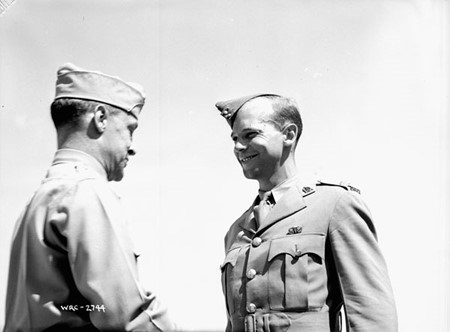
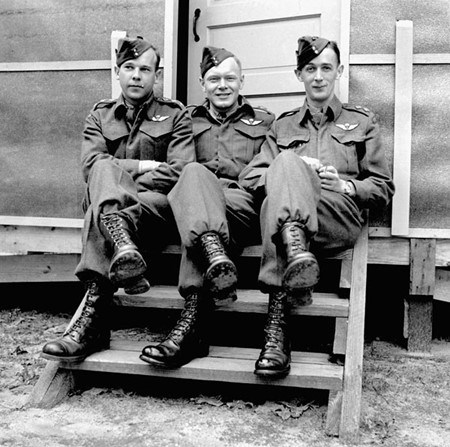
(L-R): Captains C.F. Hyndman and C.N. Brebner, Lieutenant R.W. Begg
Note: Baggy Pants – like snowboarder pants. The men often strung steel washers on a shoe lace and put them on the bottom of their pants, above the boots, to make them curl over their special ‘jump’ boots. The Jump Boots were usually polished with “Oxblood” coloured polish.
On to Camp Shilo, Brandon, Manitoba
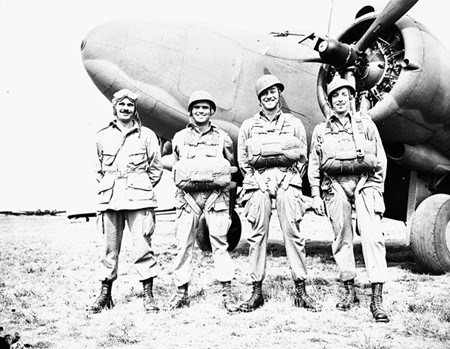
Editor: The old Lockheed Lodestar bounced around in flight and was famous for making passengers – and especially ‘Trainee’ paratroopers, sick. The men flew out of Rivers, Manitoba, north west of Shilo. Rivers was a BCATP Base for Navigators at the time.
Location: Rivers, Manitoba, Canada:
(L-R): Captain H.A. Fauquier, Company Sergeant-Major A.C. Clifton, Corporal Darrel Harris, and unidentified
Training and More Training – Back to England
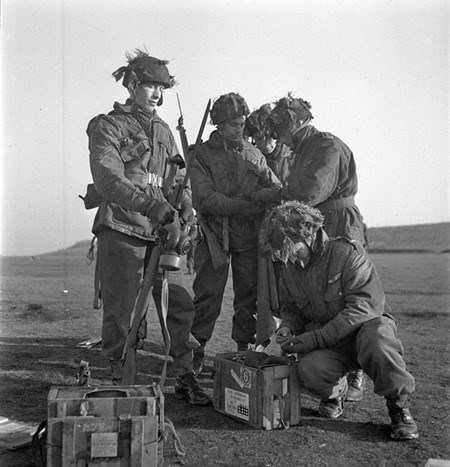
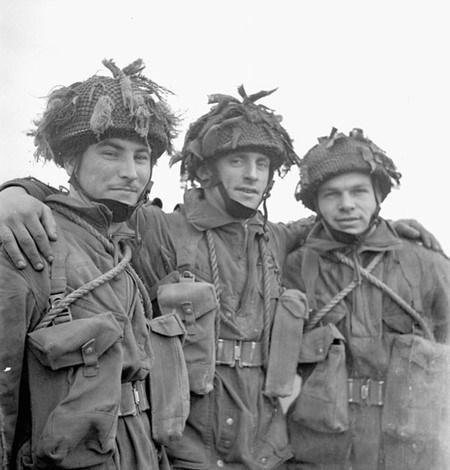
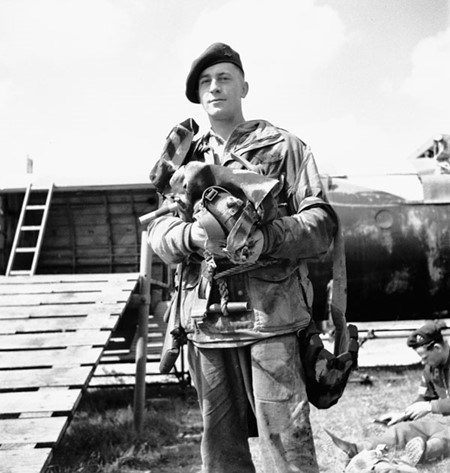
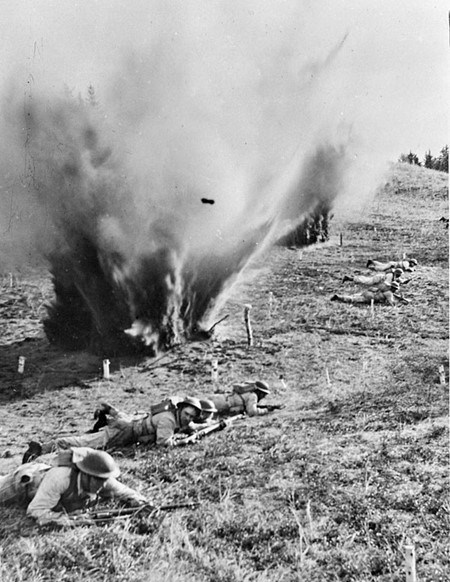
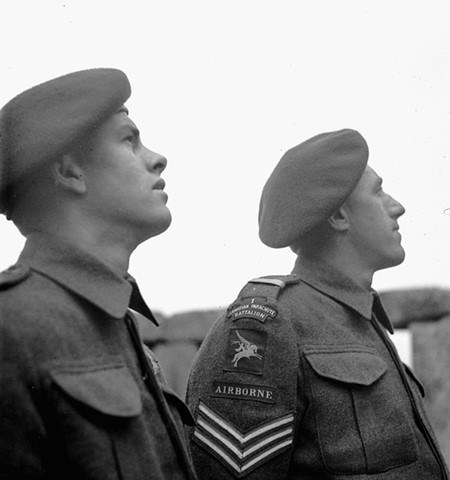
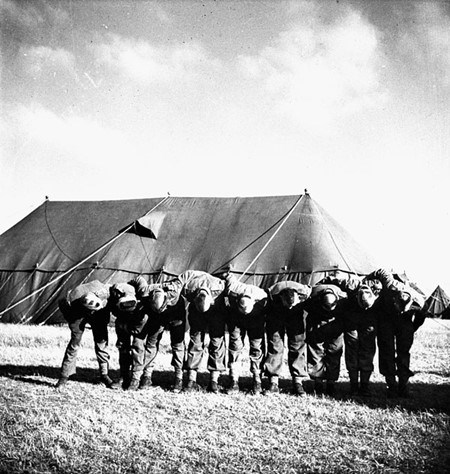
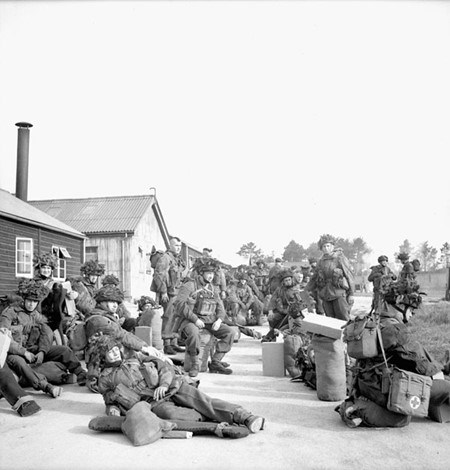
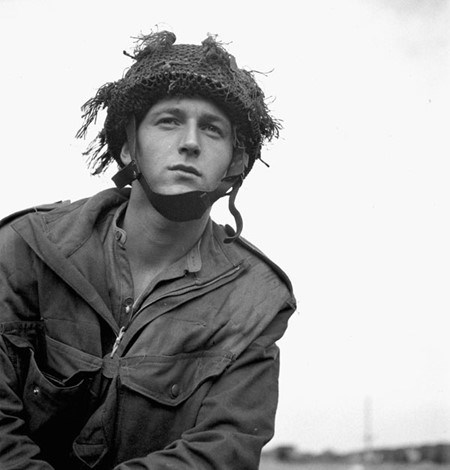
This unidentified Canadian Paratrooper represents all those who ‘Jumped’ into Normandy on the night of June 5/6, 1944 and never came home.
Lest We Forget
